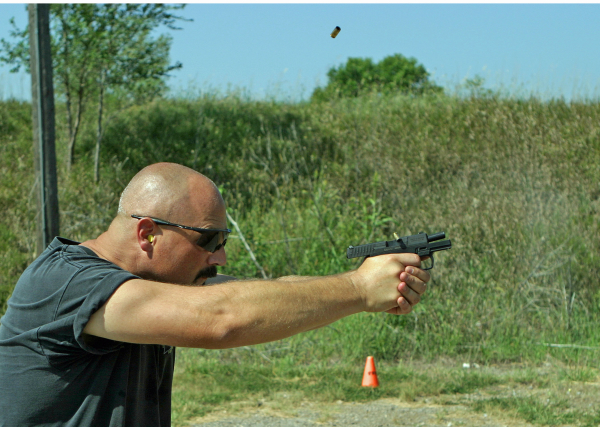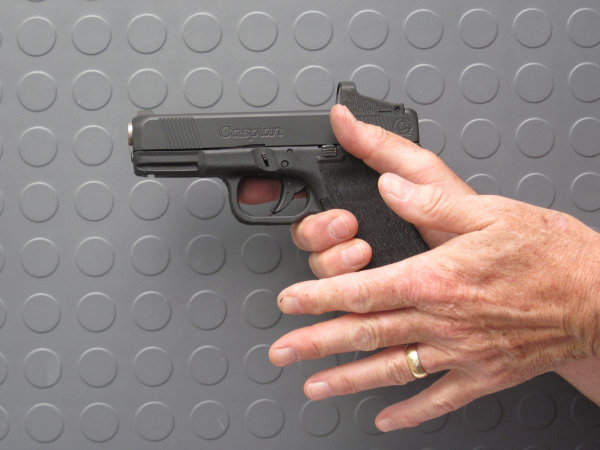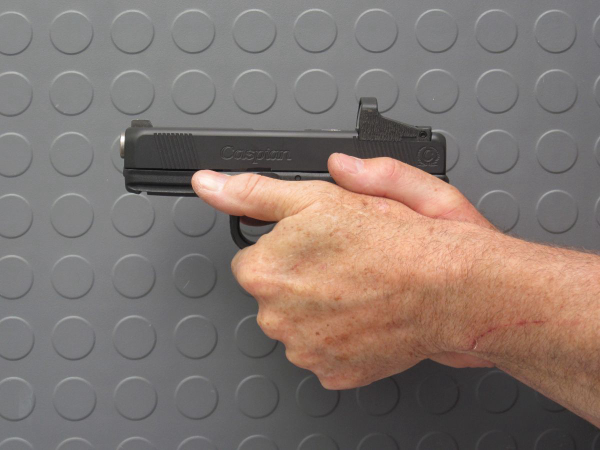The business of a good many people – in some ways, perhaps all – is communication. Clearly explaining, showing, demonstrating new or different concepts is critical to the mission. If the job is teaching someone defense firearms use, language can present interesting difficulties.
This (again) came to my attention on the “That Weems Guy” podcast, featuring Lee Weems (law enforcement firearms instructor in Georgia and proprietor of First Person Safety) in a discussion with Erick Gelhaus (now of American Cop), a retired California deputy who is an instructor at Gunsite Academy.
The episode (“More Gelhaus”) began with issues relating to language. What are the terms and phrases that you’d strip from the instructor inventory and why? While I wryly remember chastising a marginal shooter with “Watch the front sight” – replaced by “stop jerking the trigger” – this was a painful thing to see.
As I progressed in my personal journey, I’d found that (1) people who aim all the time still miss, and (2) some high-level competitors slap that trigger like it owed them money and they still win.

It was Lee, I believe, who brought up the infamous “Slow down and get your hits.”
That’s not what we intend to communicate. It’s not speed that’s creating the casual proximity of rounds on target at all. It’s the fact that the shooter is moving the damn gun during ignition. There are reasons for that.
One reason we move the gun before the cap snaps is because, in anticipation of recoil, we put tension on and try to prevent the gun from moving in recoil. If the gun is in recoil, the projectile is long gone – the gun can do what it will, but that’s not relevant to the problem.
“Slowing down” tells them to … slow down. That’s when you’re seeing three-to-five seconds to the first hit on the barn-door size silhouette nine feet from the muzzle … with lousy hits. All movement becomes slow.
No. That’s not the point of the exercise. Actually, telling them to speed up is as bad.
What they lack in shooting is focus. They lack deliberation. There are multiple things going on – even on the range – and we’re getting task stacking. Paying attention to this element and that, without taking care of the others, leads to substandard results.
It’s why the military services for years taught “by the numbers.” We isolate one thing and work on it. When that is functioning, we add another while observing that the previous step is still being executed. None of us were particularly smooth or accurate at the start. “Smooth” comes with repetitive practice.
… as long as that practice is doing what we’re supposed to be doing.

I like to get someone aimed in, with the trigger moved to the wall, challenging them to break the shot before the beep on the timer is finished. A “demand drill” I stole from Larry Vickers, it gives a student a lot of confidence and teaches the trigger (at least the end of the stroke) better than anything I tried.
If the grip is appropriate, we can see the flip or lack thereof. If there’s pronounced muzzle flip, ask “would you try to move that support hand so it covers more of the frame, here? Just try that for the next few shots.”


If there’s success, following the Weems “instruct through questions” plan, ask “how did that work? Did you notice any difference?” If the student says the gun shot flatter, then tell them they may want to continue that way. Starting with a trigger drill, we moved into grip – critical aspects of shooting.
Did I forget sights? Generally, they are going to see what they need to, they just don’t know it at this point. Cleaning up grip (first) and trigger will give a baseline. You’ll see a cluster of hits. If they’re not centered, then we can move on.
How fast do they need to shoot? The first shot should be quick as one can manage accuracy. After that, you have to shoot slowly enough to stop if there’s a change in target status or if some hammerhead is moving into the eye-target line.
The real world is different than the range.
Dealing with misses is likewise important. A hit completely off a silhouette should move to remediation – after a student has learned to shoot. Does anyone miss – completely miss – a whole silhouette at 25 yards and in?
I have. That’s a problem. If the long stage is the end of a fifty-round qual it could be that the old man was tired. He finds out by tacking up a bullseye on the next range trip and works shooting that repair center target from 25 yards. If all the rounds hit the repair center somewhere, then we’re back where we need to be.
When your people shoot a qual course, we need to move to 100% shot accountability, allowing zero misses. You may have just passed the course on a numerical score of 80/100, but if a hit is on paper, off-the silhouette, we need to take a break, consider where in the course it happened, then go back to work.
A miss on the street is tragic.
If you’d like to hear their thoughts on that subject, the SHOT Show – and see where the discussion was edited to save a career – check the podcast out here.
— Rich Grassi